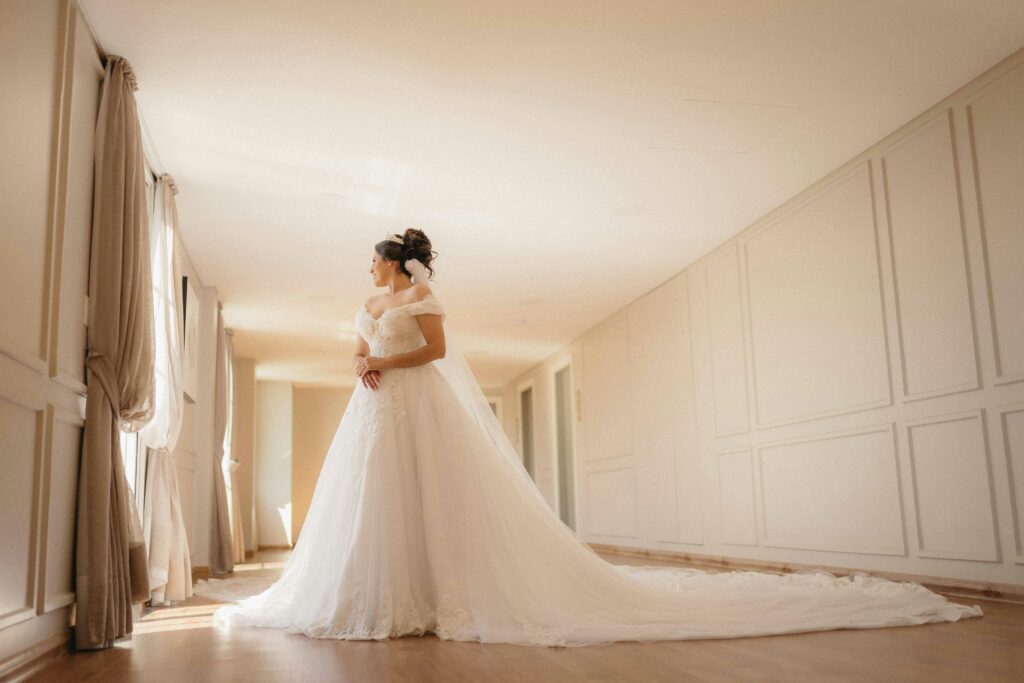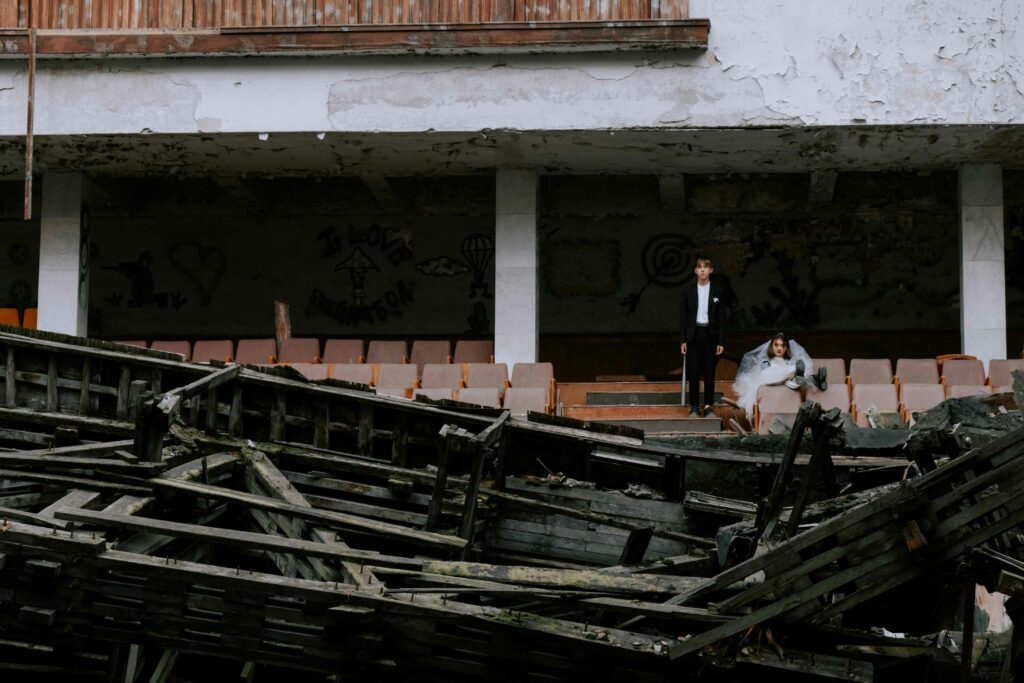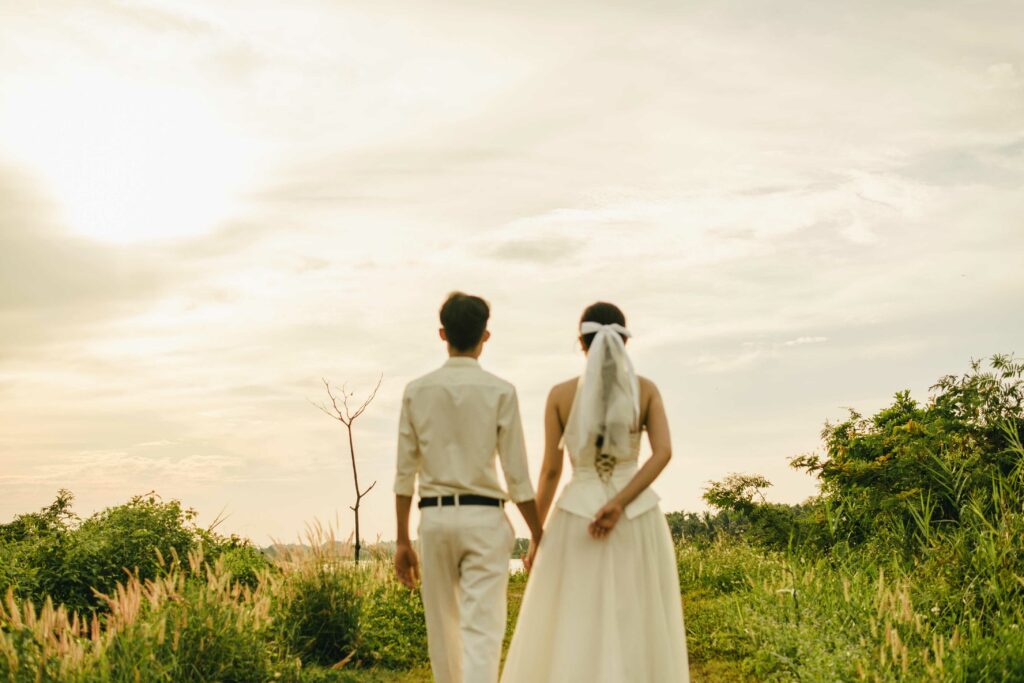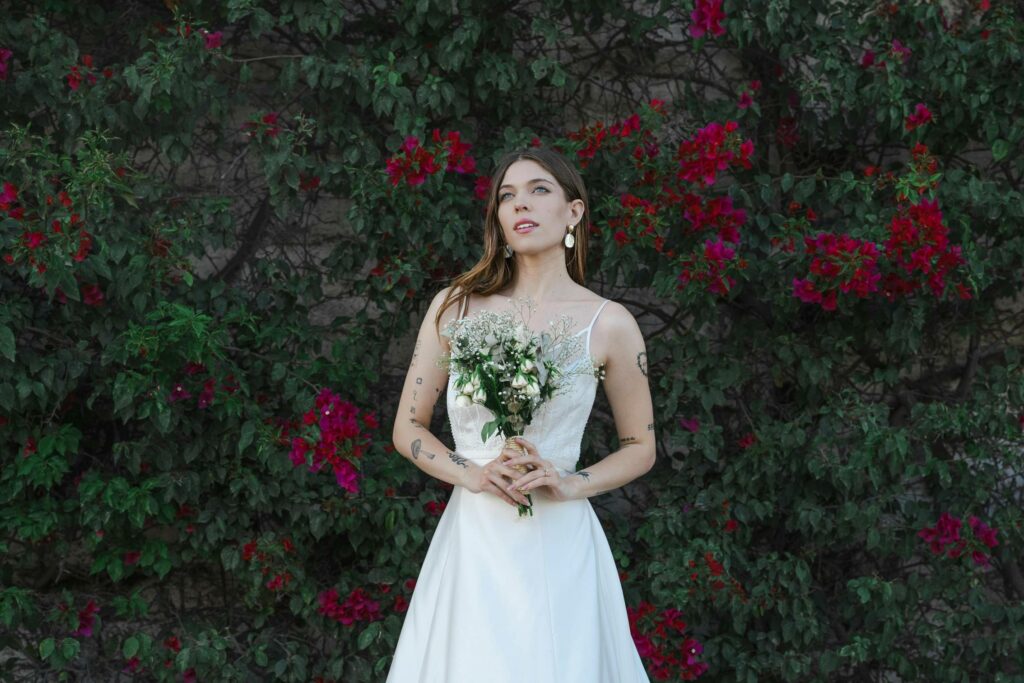Cinematic Wedding Photography: Gear, Angles & Editing
Wedding photography has evolved from static poses to moving stories and cinematic wedding photography is where that evolution hits its peak. It uses dramatic lighting, intentional composition, and emotional depth that make couples feel like the stars of their own romantic film.
Forget teal-and-orange grades and fake lens flares, cinematic wedding photography works because it feels intentional. Every frame has weight, every transition tells a story.
Most photographers chasing this look focus on gear or color grading. But the real magic comes from direction, light control, and post-production that mirrors how cinematographers shape emotion through tone and timing.
In this guide, we will break down how to plan, shoot, and edit cinematic weddings, from lens choices and lighting setups to AI-powered culling and editing workflows that let you focus on storytelling instead of endless manual tweaks.
If your goal is to make couples feel like they’re watching their love story unfold on screen, this is where to start.
TL;DR: What Cinematic Wedding Photography Really Means
- Lighting sets the mood. Cinematic wedding photography thrives on dramatic, intentional lighting that shapes emotion and directs the viewer’s eye.
- Color grading tells the story. Sophisticated editing and cohesive tones create visual narratives that feel straight out of film.
- Composition drives emotion. Use leading lines, depth, and framing to make every shot look like a movie still.
- Movement adds life. Capture couples in motion — walking, spinning, laughing — to bring natural energy into your frames.
- Editing builds continuity. Consistent tones, lighting, and pacing transform a wedding gallery into a seamless visual story.
- Workflow efficiency matters. AI tools like Aftershoot handle culling and base edits fast, letting you focus on creative direction.
The photographers commanding $10,000+ wedding fees aren't just offering photography—they're positioning themselves as visual storytellers who create cinematic experiences that feel like luxury film productions, complete with dramatic narratives and artistic sophistication that justifies premium pricing.
Read also: How to Nail Outdoor Wedding Photography: 13 Expert Tips
Cinematic Wedding Photography: Gear, Setup & Lighting Tips
Here's what every cinematic wedding shoot demands, from intimate getting-ready scenes that feel like indie films to dramatic ceremony coverage with Hollywood production values:
Camera Gear for Cinematic Quality
- Full-frame cameras with excellent low-light performance – Sony A7S III, Canon R6 Mark II, or Nikon Z6 II handle the challenging portrait lighting conditions cinematic photography demands. You'll be shooting in dimly lit churches, moody reception venues, and dramatic golden hour scenarios where sensor performance matters.
- 35mm f/1.4 for environmental storytelling – Wide enough to show cinematic context while maintaining shallow depth of field. Essential for establishing shots that set the scene and environmental portraits that feel like movie stills.
- 85mm f/1.4 for dramatic portraits – The compression and shallow depth of field create that cinematic separation between subject and background. Perfect for intimate moments and romantic close-ups that feel like film close-ups.
- 24-70mm f/2.8 for versatile coverage – Your workhorse lens for dynamic situations where you need to adapt quickly between wide establishing shots and intimate moments without changing lenses.
Lighting Equipment That Creates Drama
- Off-camera flash with modifiers – Cinematic lighting often means creating dramatic shadows and directional light that traditional wedding photography avoids. Use softboxes, beauty dishes, and grids to shape light like a film gaffer.
- Continuous LED panels for video-style lighting – Aputure AL-M9 or similar panels let you see exactly how light falls on your subjects, making it easier to create that cinematic mood before you shoot.
- Reflectors and flags for light control – Cinematic photography requires precise light control. Use black flags to create dramatic shadows and reflectors to fill light exactly where you want it.
Camera Settings for Cinematic Aesthetics
- Manual mode for consistent exposure – Cinematic photography requires intentional exposure decisions that serve the artistic vision, not just proper technical exposure. Use manual mode to maintain a consistent look across varying conditions.
- Lower ISO for clean shadows (400-1600) – Cinematic images often feature dramatic shadow areas that need to remain clean and detailed. Push your ISO only when the artistic vision demands grain.
- Wider apertures for shallow depth (f/1.4-f/2.8) – Cinematic separation between subject and background creates that "movie look" where subjects pop from beautifully blurred environments.
Need a quick guide? Learn how to shoot in manual mode:
How to Shoot Cinematic Wedding Photography (Step-by-Step)
Before the Shoot – Pre-Production Like a Film Director
Creating Shot Lists and Visual Narratives
Cinematic wedding photography starts with pre-visualization, just like film production. Work with couples to understand their story, personality, and vision, then create shot lists that follow narrative arcs. Think about establishing shots (wide venue views), character development (intimate getting-ready moments), conflict/tension (ceremony anticipation), and resolution (celebration joy).
Example Narrative Arc: Start with atmospheric establishing shots of the venue, move through intimate character moments during preparation, build tension during the ceremony processional, climax with the kiss, then celebrate with dynamic reception energy. Each phase requires different cinematic techniques.
Your first wedding photography shoot? Learn how to photograph a wedding in this article.
Location Scouting for Cinematic Potential
Scout wedding venues like a film location manager, identifying dramatic lighting opportunities, interesting architectural elements, and backgrounds that enhance rather than distract from your subjects. Look for leading lines, natural framing elements, and lighting scenarios that create mood.
Note potential for cinematic techniques: Which areas offer dramatic backlighting? Where can you use architectural elements to frame subjects? What time of day will create the most dramatic shadows and highlights?
During the Shoot – Directing Your Cinematic Vision
Lighting Techniques That Create Movie Magic
Cinematic wedding photography relies on dramatic, directional lighting that creates mood and guides attention. Unlike traditional wedding photography that aims for even, flattering light, cinematic shooting embraces shadows, contrast, and dramatic highlights that tell emotional stories.
Example Technique: For getting-ready shots, position the bride near a large window but slightly turned away, creating dramatic side lighting with deep shadows on one side of her face. Use a black flag to deepen the shadows and a subtle reflector to maintain detail in the shadow areas. This creates the kind of dramatic portrait lighting you'd see in a high-end romantic film.

Composition Rules Borrowed from Cinema
Apply film composition techniques to create images that feel intentionally crafted. Use leading lines to draw the eye through the frame, employ foreground/background layering to create depth, and consider the rule of thirds with intentional precision rather than accidental placement.
Movement and Dynamic Energy
Cinematic photography captures subjects in natural motion that feels authentic yet visually dynamic. Direct couples using different prompts like “grab your dress like you’re sneaking away from a ball,” while shooting continuously to capture the perfect moment within the movement.
Example Direction: Instead of posing the couple statically for portraits, have them walk toward you while talking to each other, then stop and embrace when they reach a predetermined spot with perfect lighting. Shoot the entire sequence to capture both the natural movement and the intimate connection.
Post-Processing Workflow for Cinematic Wedding Photography
Cinematic wedding photography is all about the feel. The goal in post is to build a visual narrative that flows like a film: cohesive tones, deliberate pacing, and emotional continuity across hundreds of frames.
Cull smart
Every cinematic wedding feels like a film set — bursts of motion, shifting light, and dozens of frames chasing that one perfect moment. A single wedding can yield 4,000–6,000 images, all competing for their place in the final story.
Aftershoot’s AI Culling sorts through those sequences like an editor reviewing dailies, pinpointing the frames where focus, light, and expression align. It finds the shot that feels like the scene, letting you skip the technical grind and move straight to shaping your narrative.
For cinematic photography specifically, this means Aftershoot can analyze those 73 variations of "couple walking through dramatic doorway lighting" and flag the frames where focus is tack-sharp, expressions are authentic, and the lighting creates maximum dramatic impact. You get back to the creative decisions, like which moment tells the cinematic story best, instead of the technical tedium of checking focus on every frame.
Apply the base look
Once you’ve chosen your key moments, the goal shifts from selection to storytelling. Import your images into Aftershoot to apply your signature editing style and give every frame the same cinematic tone, color balance, and mood that defines your work. It’s like setting the film’s visual language before you dive into scene-by-scene refinement.
From there, move into Lightroom or Capture One to fine-tune color contrast, skin tones, and lighting harmony between sequences. This is where your wedding begins to feel like a cohesive film. Every image is part of one continuous story.
Refine tone and depth
Cinematic edits rely on balance: lifted shadows without losing depth, softened highlights that preserve texture. Keep an eye on skin tones and black levels; a slight color shift can break the illusion of continuity between scenes.
Add selective polish
Use Aftershoot’s AI Retouching to clean up flyaways, smooth skin, and remove blemishes without flattening texture. The retouching settings also sync across your gallery, ensuring every portrait and detail shot feels part of the same visual world — no mismatched retouching between frames.
Final grade and export
Return to Lightroom for your final artistic pass: adjust color curves, add subtle film grain, or vignette transitions to guide focus. This last stage is about mood, not perfection. Cinematic edits thrive on texture and realism.
Pro tip: Hybrid workflows (Aftershoot + Lightroom) are now the norm among cinematic wedding photographers. You get the efficiency of AI-assisted consistency with full control for creative refinement, freeing up hours while keeping your look intact.
Deliver Cinematic Wedding Galleries
Cinematic wedding gallery delivery should feel like browsing through stills from a beautifully shot romantic film. Organize images to create a visual narrative flow, grouping similar lighting moods together and ensuring the progression feels intentional rather than chronological.
Consider creating themed mini-galleries: "The Story Begins" for atmospheric establishing shots, "Behind the Scenes" for intimate preparation moments, "The Main Event" for dramatic ceremony coverage, and "The Celebration" for dynamic reception energy.
Popular Cinematic Editing Aesthetics
Cinematic wedding photography editing is where the magic really happens, transforming beautiful captures into images that feel like they belong in high-end films. Your color grading and processing choices need to create cohesive visual narratives that maintain cinematic sophistication across 8-12 hours of varied lighting conditions.
Moody and Dramatic with Film-Inspired Color Grading
It creates that luxury cinema aesthetic most couples associate with high-end wedding cinematography. This style emphasizes deeper shadows, selective color enhancement, and sophisticated highlight rolloff that mimics expensive film stocks used in romantic movies.

Warm Golden Hour Cinema
It appeals to couples who want that perpetual "magic hour" feeling throughout their entire gallery. This approach uses strategic color grading to enhance warmth even in challenging lighting conditions, creating a consistent romantic mood regardless of actual shooting conditions.

Editorial Fashion Cinema
It works for couples who prioritize style and visual sophistication. This editing approach uses more pronounced contrast, selective desaturation, and careful attention to skin tone rendering that makes images feel like they belong in luxury fashion campaigns or high-end lifestyle magazines.

Explore different cinematic editing approaches in Aftershoot's AI Styles marketplace, where professional cinematic wedding photographers share signature color grading techniques you can adapt for your own aesthetic.
Color Grading That Creates Cinematic Mood
Cinematic wedding photography lives and dies by sophisticated color grading that creates emotional tone and visual cohesion. Unlike traditional wedding editing that aims for natural color reproduction, cinematic processing uses strategic color manipulation to enhance mood and create that "movie look" couples expect.
Focus on color relationships: Warm highlights with cool shadows, complementary color palettes that enhance skin tones, and selective color enhancement that draws attention to important elements while subduing distractions.
Where AI Editing Revolutionizes Cinematic Consistency
Cinematic wedding editing requires hundreds of precise color grading decisions across dramatically different lighting scenarios while maintaining the sophisticated, cohesive look that makes images feel like they belong in the same film. Aftershoot's AI editing learns your cinematic style from previous work, then applies those same artistic decisions consistently across new wedding galleries.
This consistency is crucial for cinematic wedding photography because the final gallery needs to feel like a curated collection of film stills rather than a random assortment of pretty pictures. When your color grading varies dramatically between indoor ceremony shots and outdoor reception coverage, the cinematic illusion breaks down.
Advanced Techniques for Film-Like Results
Cinematic wedding photography often requires sophisticated editing techniques that go beyond basic exposure and color correction. This includes selective color grading, highlight rolloff that mimics film characteristics, and grain application that enhances rather than degrades image quality.
Highlight and shadow control becomes critical for maintaining that cinematic look where dramatic lighting is preserved but details remain visible in both bright and dark areas. This often requires targeted adjustments that traditional wedding editing workflows don't demand.
Retouching Philosophy for Cinematic Portraits
Cinematic wedding retouching should enhance the dramatic, polished look while maintaining authentic emotion. These images often serve as artwork that couples display prominently, so the retouching approach needs to be sophisticated enough for close viewing while preserving the emotional authenticity that makes cinematic photography compelling.
Focus on skin enhancement that maintains texture, color correction that serves the overall cinematic aesthetic, and detail refinement that enhances the high-end, polished look without creating artificial perfection.
How much do cinematic wedding photographers make?
Cinematic wedding photography commands premium pricing because it requires sophisticated artistic vision, advanced technical skills, and extensive post-processing expertise. Couples seeking cinematic coverage understand they're investing in artistic experience rather than just documentation, which justifies significantly higher fees than traditional wedding photography.
Industry Income Ranges
Cinematic wedding photographers typically charge $5,000-$15,000 per wedding in mid-tier markets, with luxury metropolitan areas seeing $15,000-$40,000+ per wedding. The premium pricing reflects not just the sophisticated shooting techniques required, but also the extensive post-processing work that creates the signature cinematic aesthetic.
High-end cinematic specialists who position themselves as visual storytellers and luxury experience providers can command top-tier pricing by emphasizing their artistic vision, sophisticated post-processing expertise, and ability to create images that feel like professional film stills.
Entry-level cinematic photographers typically start in the $3,000-$6,000 range while developing their artistic style and building portfolios that demonstrate consistent cinematic quality. The key to growth is mastering both the lighting techniques and post-processing workflows that create authentic cinematic aesthetics.
Business Model and Scaling Potential
Cinematic wedding photography offers strong scaling potential because the artistic sophistication and technical expertise create natural barriers to competition. Photographers who master cinematic techniques can gradually increase pricing while building reputations as artists rather than just service providers.
The efficiency factor becomes crucial for sustainable cinematic wedding businesses. The sophisticated editing required for cinematic aesthetics can easily consume 40+ hours per wedding if done manually. Photographers who develop streamlined workflows can maintain artistic quality while handling reasonable client loads.
Many successful cinematic wedding photographers expand into commercial and fashion work that leverages the same visual storytelling skills, creating multiple revenue streams that extend beyond wedding coverage.
Return on Investment for Advanced Training
Cinematic wedding photography often requires investment in advanced education, sophisticated equipment, and refined post-processing workflows. However, the premium pricing potential means these investments typically pay off quickly for photographers who commit to mastering the artistic and technical requirements.
You've Mastered Cinematic Wedding Photography, Now Make It Delivery-Ready
Cinematic wedding photography success isn't just about creating visually stunning images—it's about building sustainable artistic businesses that can consistently deliver sophisticated visual narratives without sacrificing profitability or personal well-being. The photographers who thrive in this premium specialty understand that technical mastery is just the foundation; the real art lies in creating efficient workflows that maintain cinematic quality while remaining economically viable.
But here's the reality that separates successful cinematic photographers from those who burn out: even the most talented visual storyteller can get buried alive in the complex post-processing that cinematic aesthetics demand. When you're creating sophisticated color grades across 4,000+ images while maintaining the precise consistency that makes galleries feel like curated film collections, manual editing becomes the bottleneck that prevents business growth and destroys work-life balance.
The most successful cinematic wedding photographers aren't trying to manually color-grade every single frame anymore. They're building systematic approaches that handle the technical foundation—intelligent culling that identifies the most cinematic moments, consistent base editing that maintains aesthetic coherence, and streamlined workflows that preserve time for the creative fine-tuning that defines their artistic signature.
This is where embracing AI assistance becomes a competitive advantage rather than creative compromise. Tools like Aftershoot handle the foundational post-processing work—automatically culling burst sequences to find peak cinematic moments, applying consistent base edits that maintain color harmony, and managing the workflow efficiency that allows you to focus creative energy on the advanced color grading and artistic refinement that clients pay premium prices for.
Because ultimately, cinematic wedding photography isn't just about creating beautiful images that look like movie stills—it's about building artistic businesses that enhance your life while delivering the sophisticated visual narratives that transform couples into the stars of their own romantic films. The goal is creating cinematic magic while building sustainable practices that let you continue evolving as an artist instead of getting buried in endless post-processing.
Ready to streamline your cinematic workflow without compromising artistic vision? Try Aftershoot free for 30 days and discover how AI-powered assistance can handle the technical foundation while preserving creative time for the advanced artistic work that defines cinematic wedding photography.
